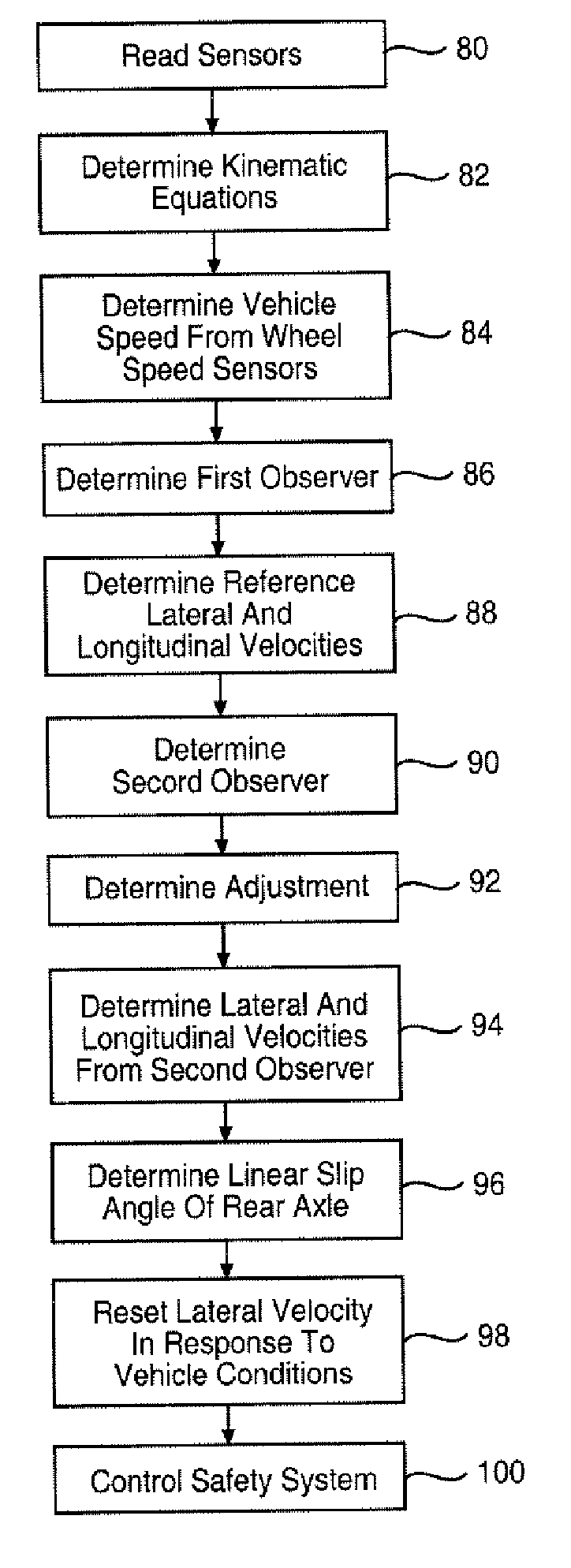Lateral and longitudinal velocity determination for an automotive vehicle
a technology for determining the lateral and longitudinal velocity of an automotive vehicle, which is applied in the direction of pedestrian/occupant safety arrangements, cycle equipment, instruments, etc., can solve the problems of inaccurate measurement of longitudinal vehicle velocity by wheel speed, inaccurate estimation accuracy, and inability to optimize vehicle performance for ride, so as to accurately estimate the vehicle velocities
- Summary
- Abstract
- Description
- Claims
- Application Information
AI Technical Summary
Benefits of technology
Problems solved by technology
Method used
Image
Examples
Embodiment Construction
[0014] In the following figures the same reference numerals will be used to identify the same components.
[0015] The present invention may be used in conjunction with a dynamic control system of a vehicle such as a rollover control system or a yaw stability control system. However, the present invention may also be used with a deployment device such as an airbag or roll bar. The present invention will be discussed below in terms of preferred embodiments relating to an automotive vehicle moving in a three-dimensional road terrain.
[0016] Referring to FIG. 1, an automotive vehicle 10 with a safety system of the present invention is illustrated with the various forces and moments thereon during a rollover condition, spinning out condition, and plowing condition. Vehicle 10 has front right and front left tires 12a and 12b and rear right tires 13a and left rear tires 13b, respectively. The vehicle 10 may also have a number of different types of front steering systems 14a and rear steerin...
PUM
 Login to View More
Login to View More Abstract
Description
Claims
Application Information
 Login to View More
Login to View More - R&D
- Intellectual Property
- Life Sciences
- Materials
- Tech Scout
- Unparalleled Data Quality
- Higher Quality Content
- 60% Fewer Hallucinations
Browse by: Latest US Patents, China's latest patents, Technical Efficacy Thesaurus, Application Domain, Technology Topic, Popular Technical Reports.
© 2025 PatSnap. All rights reserved.Legal|Privacy policy|Modern Slavery Act Transparency Statement|Sitemap|About US| Contact US: help@patsnap.com



